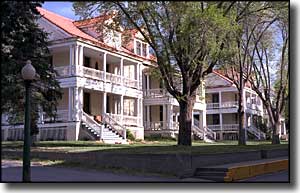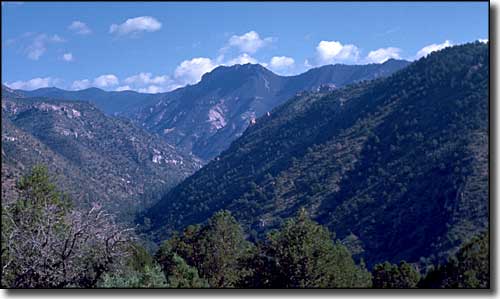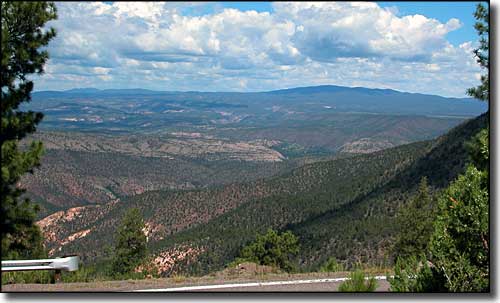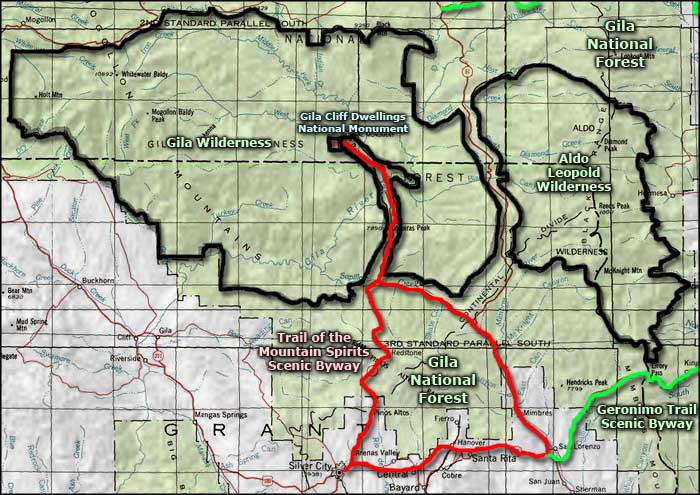

The Trail of the Mountain Spirits Scenic Byway is a 110-mile journey around the southern edge of Gila National Forest that also includes a journey straight into the heart of the forest to Gila Cliff Dwellings National Monument. Over the years, these mountains have seen many different tribes of Native Americans, beginning with the Ancient Basketweavers and Mogollon (it was the Mogollon who built Gila Cliff Dwellings). Then came the Mimbres (some folks say the Mimbres were descended from the Mogollon, others say they were contemporaries) and the Apaches. Then came the Spanish, the Mexicans and the Americans. This countryside has seen hordes of miners, homesteaders, fur trappers and mountain men, but today, there aren't many people at all.
This area of southern New Mexico is where the Sonoran and Chihuahuan Deserts converge and meet with the Rocky Mountains, the Mexican Plateau, the Great Plains and the Sierra Madre. There are natural things in these mountains that led conservationist Aldo Leopold to badger Congress for years to set aside a big piece of this landscape as wilderness. Congress finally did, creating the 558,014-acre Gila Wilderness in 1924.
The southern part of Trail of the Mountain Spirits Scenic Byway is a loop road, crossing the Continental Divide twice as it ties Silver City, Fort Bayard, Santa Rita and San Lorenzo to the Gila Cliff Dwellings. The northern section of the route was "cherry-stemmed" into the Gila Wilderness so visitors could more easily get to the Gila Cliff Dwellings. Along that road you'll also find several hot springs but be careful: there's a particular nasty one-celled organism in the hot springs that causes a form of cerebral meningitis. Don't stick your head under the water and you'll be fine.
The Mogollon Mountains were formed through extensive volcanic activity. Two large volcanoes spewed out all the lava and ash we now see as mountains here about 30 million years ago. That volcanic activity caused mineral-rich water deep within the Earth's surface to travel upward and leach minerals out of the rock as it traveled. That brought about many of the area's mineral strikes in the early days of Spanish, Mexican and American occupation. Eventually though, the concentrations of gold and silver played out and only copper was left, mostly south of the forest.
Today, a hiker in these woods might see a few of the 453 species of vertebrates living in the area. There are also more than 300 species of birds who hang out here in different times of the year.
I'd say there's something for everyone here but I can't: this region of New Mexico is shopping-mall challenged. This is a place to come to really get away from it all.



